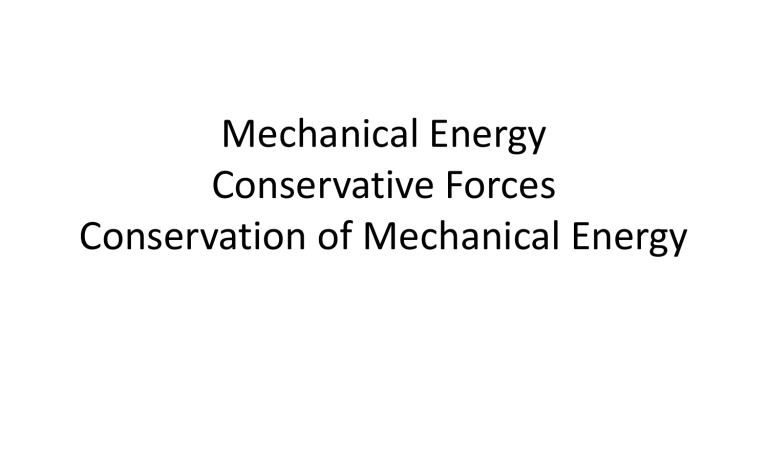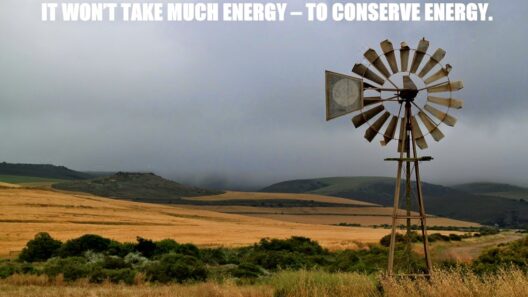Mechanical energy is a form of energy that is present in macroscopic objects due to their motion and position. Specifically, it is the sum of kinetic energy, which is the energy of motion, and potential energy, which is the energy stored in an object due to its position or configuration. This type of energy plays a significant role in various physical systems, from simple machines to complex ecosystems. Understanding mechanical energy and the conditions under which it is conserved is crucial in fields such as physics, engineering, and environmental science.
Types of Mechanical Energy
Mechanical energy encompasses two primary forms:
- Kinetic Energy (KE): This is defined as the energy an object possesses due to its motion. The kinetic energy of an object can be calculated using the formula KE = 1/2 mv2, where m represents the mass of the object, and v stands for its velocity. For example, a rolling boulder or a speeding car exhibits kinetic energy due to their respective speeds.
- Potential Energy (PE): This form of energy is associated with the position of an object in a force field, such as gravitational or elastic fields. The most familiar equation used to calculate gravitational potential energy in the context of motion is PE = mgh, where m is the mass, g is the acceleration due to gravity, and h is the height above a reference level. A perched bird poised to dive or a stretched rubber band illustrates potential energy in action.
Furthermore, mechanical energy can be categorized into various forms based on the mechanisms involved, including electrical, thermal, and magnetic energy. For instance, a hydroelectric power plant converts the potential energy of stored water into kinetic energy, through which it produces electrical energy. Such interactions illustrate the transfer and transformation of mechanical energy through different modalities.
Principle of Conservation of Mechanical Energy
The principle of conservation of mechanical energy asserts that in an isolated system with no non-conservative forces acting, the total mechanical energy remains constant. This principle mandates that energy cannot be created or destroyed but can only be transformed from one form to another. In practical terms, this means that unless external forces, such as friction or air resistance, intervene, the sum of kinetic and potential energy in a system is invariant over time.
For instance, consider a pendulum in an ideal environment, devoid of any frictional forces. At the highest point of its swing, the pendulum has maximum potential energy and zero kinetic energy. As it descends, potential energy converts to kinetic energy, reaching its maximum kinetic energy at the lowest point in the swing, where potential energy is minimized. This cyclical transformation continues indefinitely in an idealized setting, demonstrating the conservation of mechanical energy.
Conservative vs. Non-Conservative Forces
To fully grasp the conditions under which mechanical energy is conserved, it is essential to distinguish between conservative and non-conservative forces:
- Conservative Forces: These forces, such as gravity and spring forces, are velocity-independent and do not dissipate energy. Work done by conservative forces depends solely on the initial and final states of the system, not on the path taken. This is a critical characteristic that permits the conservation of mechanical energy.
- Non-Conservative Forces: These forces, including friction, air resistance, and tension, are path-dependent and tend to dissipate energy as heat or sound. The work done against these forces removes energy from the mechanical system, thereby violating the conservation of mechanical energy. In real-world instances, such as a car coming to a halt, kinetic energy is transformed into thermal energy due to friction, illustrating this principle.
Applications of Mechanical Energy Conservation
The implications of mechanical energy conservation are vast and applicable in numerous fields:
- Engineering: Designers harness the concept of mechanical energy to create efficient machines and devices, ensuring maximum performance while minimizing energy losses. Innovations in sustainable technology have emerged in the design of wind turbines and waterwheels, where conservation principles facilitate energy efficiency.
- Aerospace: The conservation of mechanical energy is pivotal in aerodynamics and flight mechanics. Understanding the conversion between kinetic and potential energy enables engineers to optimize flight paths and reduce fuel consumption.
- Environmental Science: Studies of energy flow in ecosystems frequently analyze mechanical energy to understand the dynamics of living organisms and their interactions with the environment. The balance between kinetic and potential energy affects everything from water cycles to the motion of wildlife.
Limitations and Real-World Considerations
It is crucial to remember that while the conservation of mechanical energy can be a powerful analytical tool, real-world systems often involve complexities that require nuanced understanding. In practical situations, factors such as air resistance, friction, and energy loss through sound can complicate energy analysis. Accurate modeling may require considering these variables to achieve reliable predictions.
In conclusion, mechanical energy is a fundamental concept in physics that encompasses both kinetic and potential energy. Its conservation is contingent upon the absence of non-conservative forces. The implications of this principle extend far beyond theoretical concepts, influencing engineering designs, aerospace innovations, and ecological interactions. Understanding mechanical energy and its conservation not only enriches scientific knowledge but also aids in fostering sustainable practices across multiple domains.







